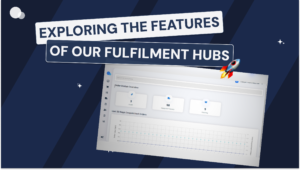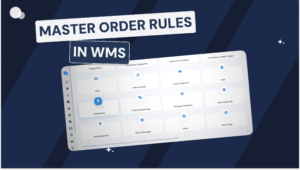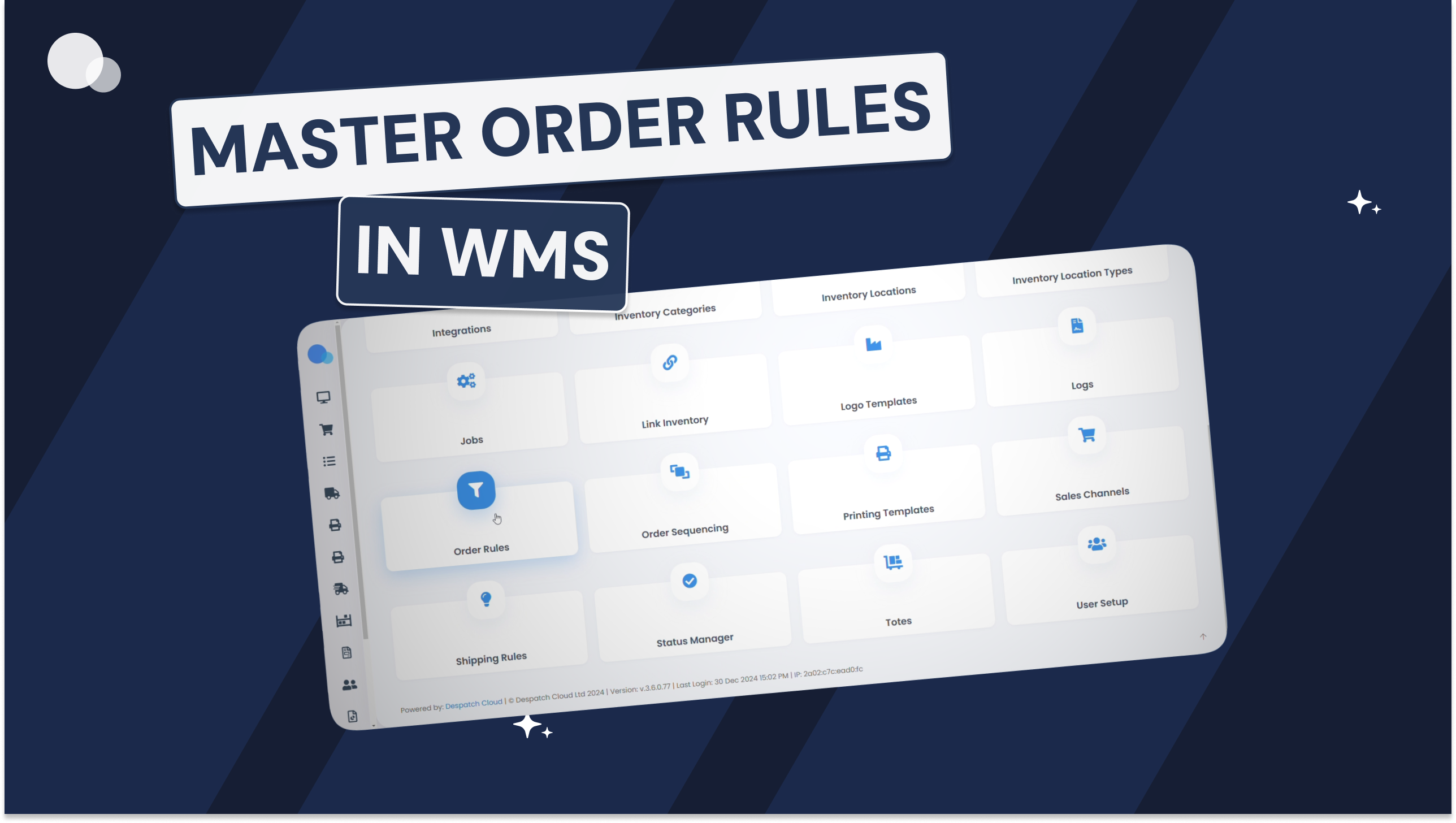Top Tips to Get Peak Ready and Maximise Amazon Sales in Q4 with Thomas Baker
On June 4th, we sat down with FordeBaker founder Thomas Baker for our latest podcast episode Supercharge Your Marketplace Sales: The Ultimate Trading Strategy for Customer Acquisition where Tom shared his top tips and strategies to prepare for peak and thrive in the Amazon marketplace this Q4. We later delve into TikTok Shop, with exclusive insights on how businesses can leverage app-specific tools and features to create brand awareness and drive increased sales.
Who are FordeBaker?
FordeBaker are a one-stop global marketplace agency helping market-leading brands launch, grow and expand across a wide range of marketplaces.
Their team of ex-Amazonians, former product business owners and brand specialists provide a personalised, full-service approach that promises to turn brands into marketplace best sellers.
When does peak officially start?
Originally, there were two official peak periods, those being the Black Friday weekend culminating with Cyber Monday, followed by the weeks leading up to Christmas and Boxing Day.
Today, there is no official date. While some brands decide to run promotions over the Black Friday weekend only, others start as early as mid-October to capitalise on the Prime Day momentum.
When should I start preparing for peak?
Depending on the size of your business and how you want to approach peak, you might want to start planning several weeks earlier, up to a few months.
Customers expect fast, smooth deliveries. Whether that’s replenishment, pick and pack, overall delivery experience, or returns, every aspect of your post-purchase counts. Planning ahead will help you reduce potential hiccups while maximising the increased influx of orders.
Not only that. With Amazon, there are early deadlines to submit top deals, so a lot of decisions around stock levels, product strategies and marketing should ideally be made and agreed upon by August.
Top tips for maximising Amazon sales in Q4
Now that we have established what peak season entails and the importance of planning ahead, let’s look at Thomas’ top tips to prepare for peak season and maximise Amazon sales in Q4.
1. Establish objectives and be realistic
At an account level this means either maximise revenue OR maximise profit. It is also important to make sure these are rooted in your current business reality.
If you’re new to Amazon, you should first be looking at increasing the volume of product units sold per day, and only then look at profit maximisation.
As Tom explains, trying to maximise profit during a launch phase often leads to suboptimal long-term results for both revenue and profit. On the other hand, if you’ve been trading on Amazon for more than a year, start looking at last year’s results and how this year is tracking to create your profit maximisation objectives.
2. Plan your inventory requirements but recognise the need to adapt your trading strategy to commercial realities
This means forecasting based on sales objectives but also allowing for some wiggle room. It is always a good idea to get your stock into Amazon earlier and then replenish in smaller but more frequent shipments to balance availability with overstock risk.
At the same time, it is important to recognise that sometimes it is impossible to keep products in stock. You may have very long lead times or large catalogues. As a marketplace team you should have the processes to adapt. Move ad budget around, increase or decrease budget, focus on strong sellers with strong stock levels. Continuously monitor demand patterns and implement incremental changes accordingly. Align yourself to business realities as well as what the consumer wants.
3. Sacrifice margin in lower sales periods to increase visibility before peak period
It is important to increase distribution and access, but so is having a visibility strategy in place. The same principle applies if you’re trying to defend market share. Negotiate pricing strategies in conjunction with Retail and DTC pricing.
You can increase prices as demand increases and the INTENT to purchase increases. The higher CvR more than makes up for any reluctance about higher prices. This is your time to maximise profit.
4. Gathering social proof
Pricing is by far the biggest determining factor when it comes to increasing units sold and can be used to compensate for the lack of ratings and reviews. As a new business, you can use lower prices to encourage purchases and start building that social proof via customer reviews. Thomas recommends 15 reviews per parent SKU to really start building that customer trust and brand recognition. This will also help your business stand out to the Amazon algorithm, as typically the more product units sold, the more visibility you will get in the marketplace.
Adopting these strategies will help you create a robust Q4 plan that will not only help your Amazon business get through peak, but also build sustained growth in the long-term.
What’s the best way to prepare for Prime Day/Black Friday?
Now that we have gone through general good practice and insights to optimise and scale your Amazon operation, let’s look at peak-specific strategies and advice from Tom:
1. Understand how Prime Day/Black Friday align with your overall business objectives.
A lot of businesses feel obliged to engage with Prime Day and Black Friday for fear of missing out. Ask yourself why your business should engage with those peak days, and whether that aligns with your overall business goals. Prime Day and Black Friday are mainly about revenue and selling a lot of product units, so if you’re looking to stretch profit margins, this might not be the event for you.
According to Thomas, you should submit products for Prime Day/Black Friday if your objectives or product performance aligns with the following:
- Increase of revenue and/or unit volume
- Creating adoption of new products
- Expected repeat purchases post-Prime Day
On the other hand, you should not submit products if you’re hoping for these outcomes:
- Increased profit
- Liquidation of poor performing SKUs
2. Bold deals and discounts for maximum results
Prime Day/Black Friday is all about offering irresistible deals and discounts to shoppers. The strict rules on deal discounts come from the fact that Amazon aims to release the lowest offer of the year during those two days, as Prime Day/Black Friday is the promotional icon event that recognizes Amazon on the customer side so Amazon wants to keep this promise.
Analyse past sales data and deal events to identify which are the top SKUs with high price elasticity. Additionally, consider offering exclusive discounts or bundle deals to proactively incentivise larger order values.
3. Plan stock replenishment at least 60 days (about 2 months) in advance
This is particularly relevant for Amazon Sellers. Restocking ahead is crucial to avoid the expected inbound bottlenecks/backlogs at Amazon warehouses as we get closer to the big event
4. Have a solid pricing strategy in place
Products will only be eligible for Prime Day/Black Friday deals if pricing is compliant with Amazon’s rules. For example, Amazon does not approve Top Deals / Spotlight Deals if the same item has been promoted during the 30 days prior to the event.
Price consistency is critical, and Amazon knows the games sellers will play. Do not try to increase your prices just before Prime Day/Black Friday to create a false discount price. Amazon retains the right to remove deal offers if they catch you red-handed.
5. Advertising budgets
Plan your budget to maximise visibility pre-event and not just for Prime Day/Black Friday/Cyber Monday. This will increase search rank and product discoverability.
It is also important to note cost-per-click will be much higher on the day of the event than during the weeks leading up to it. Focusing on the pre-Black Friday and post-Cyber Monday period will get you a much better return on ad spend.
6. Have a strong product selection
Remember that Prime Day/Black Friday is all about an immediate and potentially large impact. You have to put your best products in order to capitalise.
Best can mean a few things:
- Which products are highly desirable but rarely on discount?
- Which products have enough margin to justify a deep discount (40% off for example)?
- Products that are new to the market and would benefit from a sales boost
- Giftable items also tend to perform really well, especially as we get closer to the holiday season.
7. Choosing the most suitable deal type(s) for your business
Lightning Deals: Lightning Deals are limited-time, limited-quantity promotions that offer deep discounts on select products. These deals typically last for a few hours and are featured prominently on Amazon’s Deals page and product detail pages. Lightning Deals can drive significant traffic and sales volume. Recommended if running on a top seller SKU with attractive discount – 40% would be ideal.
Spotlight Deals / Prime Exclusive Discounts: Prime Exclusive Discounts are special offers available exclusively to Amazon Prime members. Both Sellers and Vendors can offer Prime Exclusive Discounts. It is recommended for products that are rarely discounted to incentivise Prime members to make purchases during Prime Day.
SnS Coupon / Voucher Promotions: Amazon allows Sellers and Vendors to create coupon promotions that offer discounts on eligible products. These coupons are displayed on the product detail pages and can be „clipped“ by customers for redemption at checkout. Sellers and Vendors can create Prime Day coupon promotions to encourage shoppers to take advantage of special discounts, driving conversion and increasing sales. Naturally, their visibility will be more limited than the above deal types because the shopper has to get to the product page to view them.
A secondary consideration is that vouchers are a reward for select customers, such as Amazon Prime members or loyal customers. That can generate excitement and drive sales leading up to Prime Day. Sellers and Vendors can send out exclusive early access codes or create special landing pages for VIP customers to access Prime Day deals before they’re available to the wide audience.
8. Pre-Prime Day/Black Friday Marketing Push, generally from 7 days before onwards.
In this period, during the Amazon countdown, the traffic starts to go up across the Marketplaces thanks to the Amazon marketing activities promoting the event in advance. This is a good chance to offer pre-Prime Day promotions and discounts to warm up your audience and drive early sales, especially on products that will be on promotion BUT are not best sellers. The extra push when there’s less competition and lower CPCs will help them to perform better in the long run.
9. Optimise Your Storefront for Pre-Event Browsers:
Ensure that your Amazon storefront is optimised and ready to capture the attention of shoppers during the lead-up period. As well as giving prominence to your promoted products on the store homepage, consider creating a dedicated Prime Day section in your store to showcase featured products and exclusive offers.
You should try to make it as easy as possible for shoppers to browse through your catalogue. Simple and clear messaging is also key. Tom recommends keeping one headline/message per image in your gallery, with a clear value exchange.
This means not simply listing the benefits of your product, but also its advantages compared to other competitors in the marketplace. It is really important you hone that distinction. Customers should immediately understand from your page what differentiates your product, and why they should buy your product over another brand’s that is just a click away.
New Opportunities for 2024
The biggest single opportunity for product brands is without question TikTok Shop.
What is TikTok Shop?
It’s still all of the media attention and product discovery that everyone will be familiar with, but TikTok Shop adds functionality within the TikTok app which allows brands to run a store, market products through affiliates, live streams, advertising and content. It also allows consumers to purchase items without leaving the app.
Since its release in 2023, TikTok has quickly become one of the fastest growing marketplaces in the eCommerce space, helping thousands of businesses kickstart their brands and reach more customers.
Are people actually buying products?
Recent data shows 47% of TikTok users have purchased after seeing a product on TikTok, while 27% of TikTok Shop users have made a subsequent purchase after purchasing through the Shop tab. These numbers are only expected to grow as we move into peak.
Why expand to TikTok Shop?
Customer acquisition
Be present where your audience spends their time. Introduce your brand and products to people that might not be active in other marketing channels OR as those are marketing channels which have a less powerful influence over the purchasing decisions of potential new customers.
Great for promoting and increasing product discovery online
Not many other platforms are intrinsically suited to launching and raising awareness for new products. TikTok Shop will create a halo effect of increased sales on your other channels.
Isn’t TikTok Shop just for cheap products?
When it launched, yes. However, this is rapidly changing as big brands quickly move into the space. TikTok doesn’t want to be known as a bargain basement, and brands love the blend of exposure and sales.
These trends are changing perceptions and expectations. That doesn’t mean people are buying high ticket items just yet, but it does mean you can successfully sell £20-£75 products.
Just be smart about how you trade the products. Think about bundles, multi-packs and TikTok exclusives to drive intent and increase AOV.
How do brands increase sales in TikTok Shop?
There are 3 main marketing channels within TikTok Shop:
- Content and Live Streaming
- Creators
- Advertising
Some businesses will be reluctant due to the heavy demands of permanent content creation. Brands DO NOT have to create content and develop a brand feed to be successful with TikTok Shop.
Prioritise working with Creators and advertising
Creators are authentic voices and already have an audience. Leverage these strengths.
Similarly, the transparency around creator performance that the platform offers, as well as the incentive for creators to drive sales via the TikTok Affiliate program, mean a lot of opportunity for businesses to tap into this creator space to bring creativity and uniqueness to their product promotion.
There is also an existing expectation on the consumer side for product placement to happen, so you don’t need to worry about upsetting potential customers by working with their favourite creators.
What are the key principles to trading on TikTok
Go native
Inevitably, some work that you do on other platforms will cross-over to TikTok Shop, but a complete copy/paste job will fail. Take the time to understand the nuances of the platform and what makes it unique. Spend time understanding how content gets shared and what ingredients create reach and engagement.
Be quick to react
Unlike platforms like Amazon, brands must be actively engaged with TikTok. Monitoring and reacting to latest trends is a great way to show consumers that you understand the medium. For the brand, it can mean unrivalled bursts of attention.
Authentic Voice
Don’t bother trying to sell on TikTok Shop if you haven’t spent the time understanding how to communicate on the platform. Fundamental to your communication must be a strong sense of openness, credibility and authenticity. Be real. Don’t be scared to be human.
Live Streaming
Some have tried, all have failed. TikTok is the exception. Live shopping is very successful, particularly during big sales events. Learn how the best do it; then consider your trading strategy and the best way to present to keep shoppers engaged.
Media Budget
TikTok Shop ads drive conversions at a very effective ROAS. The audience is large and keen to buy new products. With that mix, it’s important to invest into advertising. Not just the amount you spend but also the quality of the creative.
What are the top blockers for businesses when implementing a multichannel strategy and tapping into new marketplaces?
A lot of it comes from understanding the opportunity, and the investment required to maximise that opportunity.
A lot of businesses that have been trading on Amazon for a while might also be more reluctant to expand to other marketplaces due to perceived complexity, especially on a logistics, operational level. To this Tom says to not be intimidated, especially with TikTok Shop, where the barrier of entry is really low, and the trading process all very seamless.
Conclusion
When approaching peak season, it is important to plan ahead. Whether that means restocking, demand planning, budget allocation, or coordinating marketing efforts, giving it at least a couple months to prepare is the best way to set up your Amazon business for success. Develop a deep understanding of your business and define clear goals for peak and beyond. When looking at maximising sales and scaling your business, consider leveraging TikTok Shop’s unique tools and features to tap into a larger audience and raise product awareness. This will help you build a multichannel strategy designed for sustainable, long-term growth, while helping you maximise revenue and profit.
Give it a listen
Listen to our latest Talking Shop episode Supercharge Your Marketplace Sales: The Ultimate Trading Strategy for Customer Acquisition with Tom Baker on Apple Podcasts.






